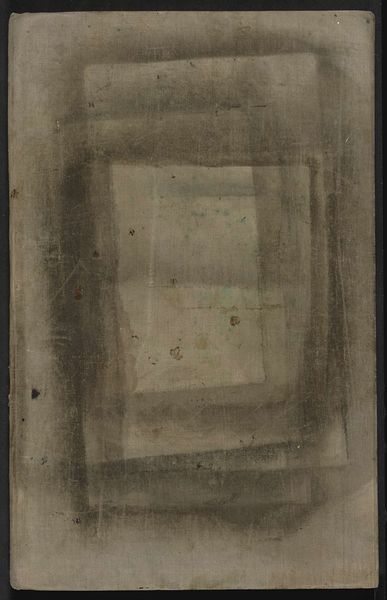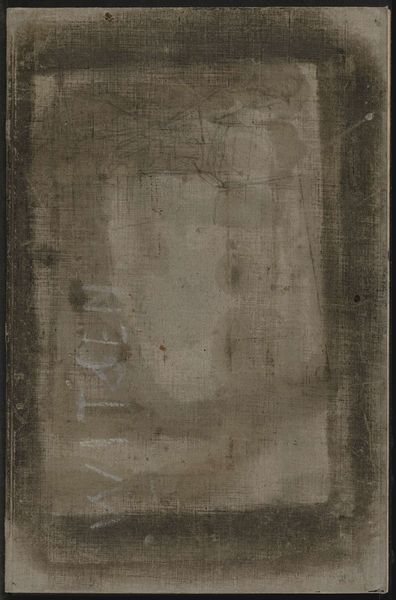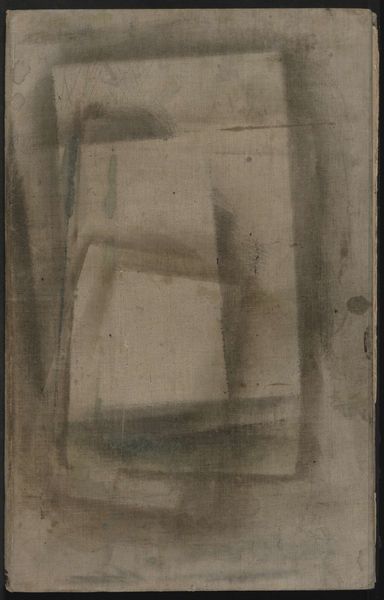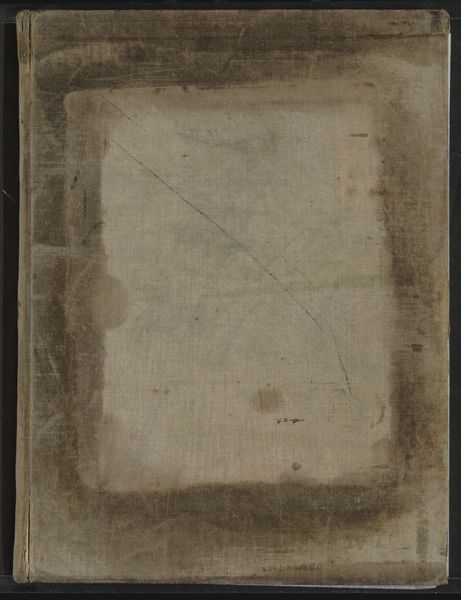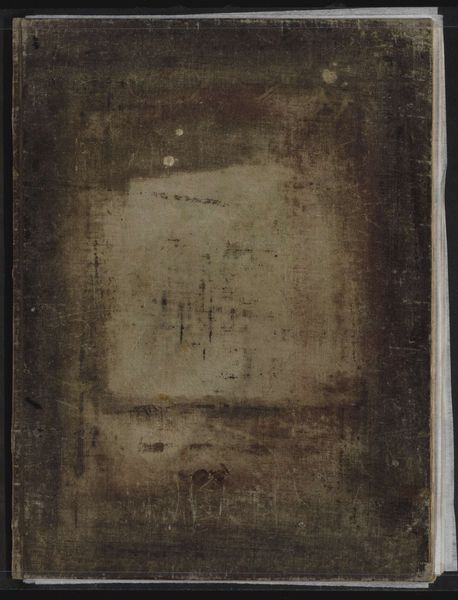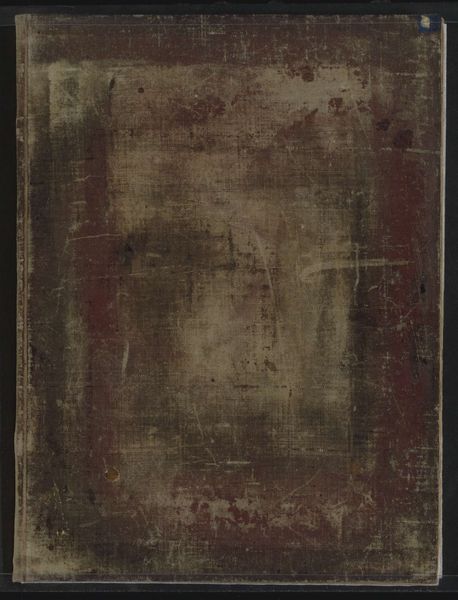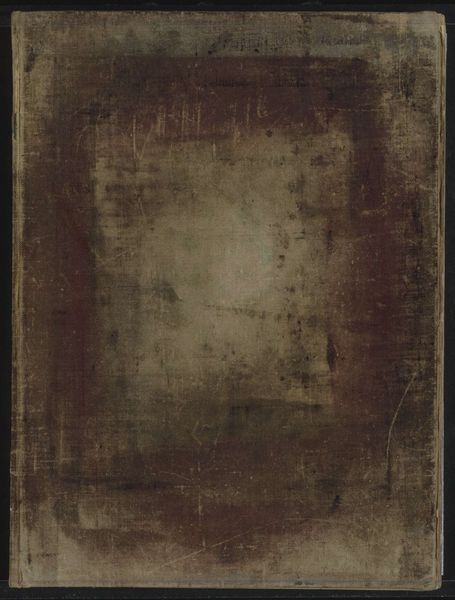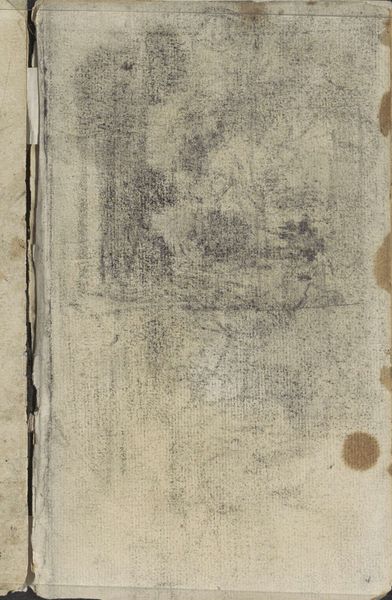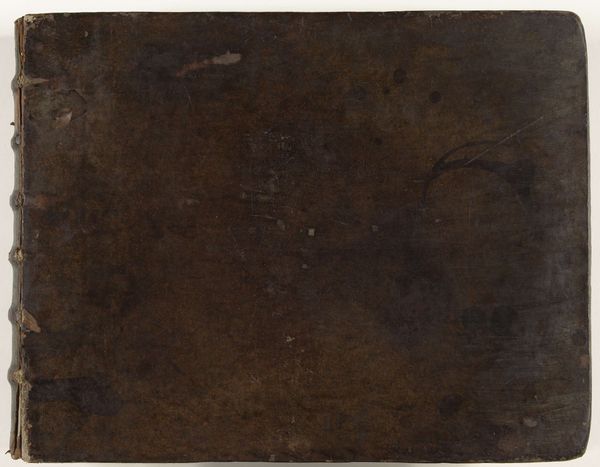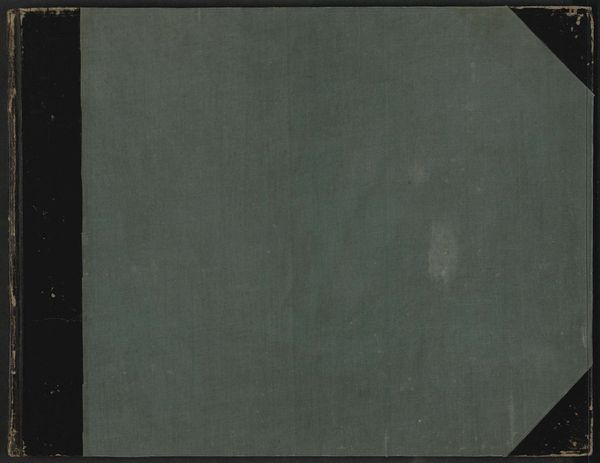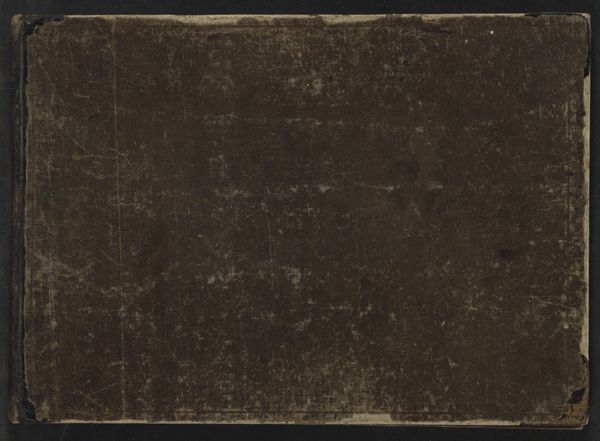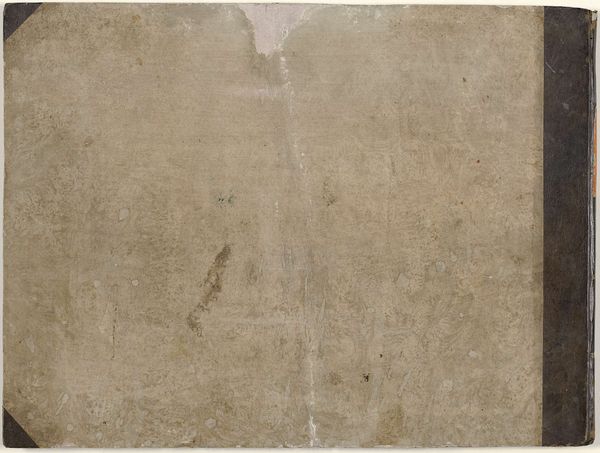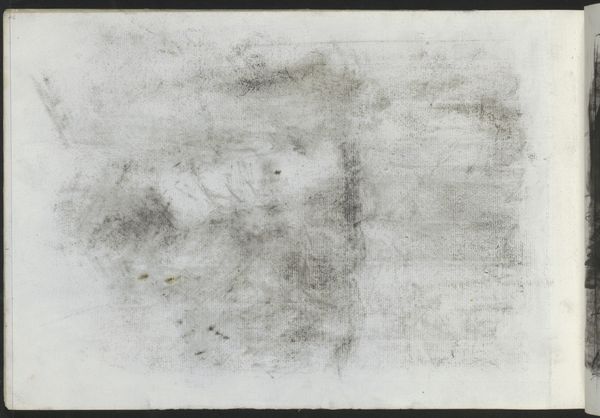
Dimensions: height 352 mm, width 266 mm, thickness 13 mm, width 540 mm
Copyright: Rijks Museum: Open Domain
Editor: Here we have Willem Witsen's "Sketchbook with 26 Leaves", dating from 1874 to 1923. It's a charcoal and watercolor drawing on paper. I'm immediately struck by the layered frame and central void, almost like looking through a window into nothingness. What visual cues stand out to you? Curator: The delimitation of the central plane interests me, principally the coarse materiality used to indicate a recess into the indeterminate space that lies between the viewer and surface of the plane. Notice how the density of charcoal aggregates at the boundaries, establishing depth and drawing attention to the stark flatness within. Do you agree? Editor: Yes, the density really defines that central space. The rough texture around the edges seems to emphasize the smoothness within, creating a visual contrast. It makes you wonder if the sketchbook itself is more the subject than what's supposedly *inside*. Curator: Precisely! Witsen here masterfully manipulates value to achieve precisely such effects. It forces a reflexive observation about surface and dimensionality that might easily escape us otherwise. Editor: I see what you mean. The texture becomes a key component, even more so than any representational imagery. It makes me think about how much the physical qualities of the artwork contribute to its meaning. Thanks for pointing that out! Curator: Indeed. We must consider the intrinsic aesthetic properties to unlock its full potential. It offers a unique study of what constitutes an image.
Comments
No comments
Be the first to comment and join the conversation on the ultimate creative platform.
